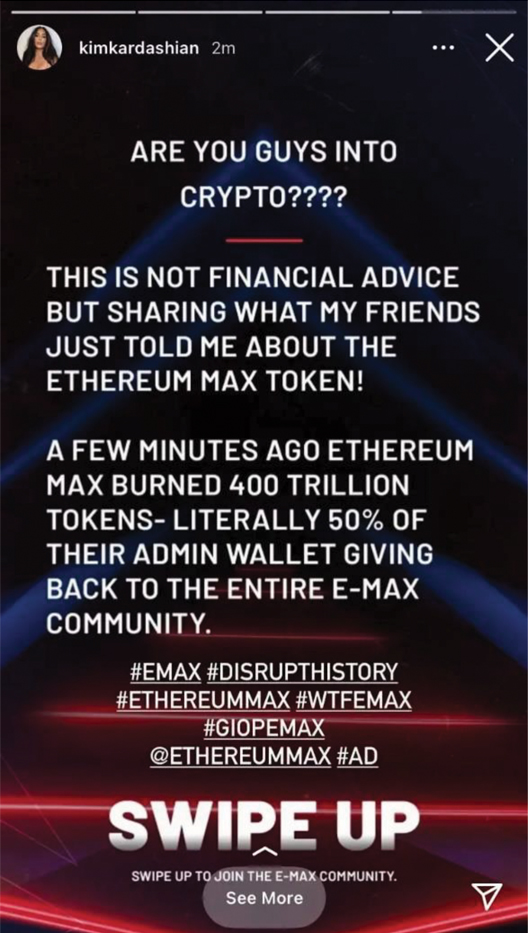Can You Hear Me, Gen Z?
Banking has its work cut out as younger generations turn to finfluencers and social media for financial advice.
Banking has its work cut out as younger generations turn to finfluencers and social media for financial advice.

By Angela SP Yap & Kannan Agarwal
Elbowed out – that’s what happened to banks when financial influencers, or ‘finfluencers’, came onto the stage.
Whether it’s about personal finance, investing know-how, or how to get out of debt, finfluencers are increasingly using their social media credibility on platforms such as TikTok, Instagram, and YouTube to provide tips, opinions, and advice about financial matters and are reaching out to younger generations far more effectively than banks.
In the US, almost 80% of millennials and Gen Z get their financial advice from social media, according to a joint survey by Forbes Advisor and market research firm Prolific earlier this year. The same trend is echoed in a 2022 report published by FINRA Investor Education Foundation examining the changing landscape of investors in the US which found that:
These numbers run in tandem with the deteriorating level of trust that the younger generation have of traditional sources of information. Of the 16 industry sectors identified by Edelman, financial services ranked 15th in trustworthiness.
The appeal of finfluencers is quite basic: People trust who they know, or in this instance, people whom they feel they know. Coupling charismatic personalities with engaging content, finfluencers have captured the attention and imagination of millennials and Gen Zers by making themselves real, relatable, and free from PR-speak. They remind you of someone you trust – a mentor, an adviser, a good friend – with no fancy branding or hefty production budget. It is no wonder that Gen Zers in the Forbes Advisor study feel the way they do:
Although celebrity endorsements are nothing new, finfluencers are testing the boundaries by making recommendations and failing to declare potential conflicts of interest in an industry that is highly regulated and stringent about performance claims. Some headlines are clearly clickbaits (“How to buy a house with no money”) whilst others are reminiscent of pump-and-dump schemes (“These hidden-gem stocks boosted my earnings”).
Some finfluencers are professionally qualified and proffer sound financial advice. They also move the needle more effectively by improving financial literacy and increasing retail participation, especially in the sphere of values-based investing. However, a recent research paper by Sue S Guan, The Rise of the Finfluencer published in the New York University Journal of Law & Business, typifies the average finfluencer as “motivated by a much broader set of incentives than seeking out fundamental value information. They seek to maximise popularity, be entertaining, and “grow their brand”, among other motivations”.
“Positive and negative implications follow. On the one hand, finfluencers can improve financial literacy and broaden retail investor participation and market access. On the other hand, finfluencers can influence large numbers of followers’ trades in predictable ways. As a result, their incentives to provide valuable information to those followers may diminish, and profiting at the expense of their followers becomes more tempting.”
The majority are free-and-easy about technical analysis and investor returns; they rely on anecdotal evidence in their marketing pitches; their message positions them in an altruistic light, that they are increasing everyone’s access to information. A recent poll by an integrated public relations agency found that 82% have either purchased, researched or considered purchasing a product or service after seeing friends, family or influencers post about it. Such inordinate sway over retail investors can affect price movements and impact financial stability.
Aside from social currency, being a finfluencer is an increasingly lucrative profession. Top-tier finfluencers reportedly earn USD500,000 or more through collaborations with financial firms. Mega-influencers, those with over one million followers, charge in the range of USD5,000 to USD25,000 per sponsored post.
The finfluencer revenue model is simple. In exchange for the direct or indirect promotion of products, services, or securities on their individual platform(s) or to reach out to their ‘tribes’ or followers, organisations agree to:
The most prominent case thus far relates to a crypto asset security token called EMAX which was sold by the website EthereumMax and recruited Hollywood A-listers to pump up its price.

Kim Kardashian, the celebrity businesswoman and social media maven with 364 million followers on Instagram, coyly promoted the newly issued EMAX with a story about “what [her] friends just told her about the EthereumMax token” (Figure 1). Her post was labelled an ad and chimed in with other recruited celebrities such as boxing legend Floyd Mayweather Jr, American footballer Antonio Brown, and basketball Hall of Fame’s Paul Pierce. Each were paid for their promotions but disclosures fell short of regulatory standards.
At the height of the cryptocurrency hype, the token’s market capitalisation was close to USD250 million in May 2021. Whilst these celebrity endorsements were running full force, few knew that the EthereumMax founders – Russ Davis and Justin Maher – were dumping their own EMAX tokens through secret digital wallets. In just a few months after Kardashian’s post, the token had lost 98% of its initial value, triggering a securities fraud investigation.
Last October, the US Securities and Exchange Commission charged Kardashian with promoting and failing to disclose a USD250,000 payment she received for the EMAX post, in violation of the anti-touting provision of federal securities laws. Although she technically did not admit or deny the SEC findings, Kardashian paid a total of USD1.26 million in penalties, disgorgement, interest, and agreed to cooperate with the SEC’s ongoing investigation into the EMAX debacle.
In a press release, Gary Gensler, SEC Chair, said: “This case is a reminder that, when celebrities or influencers endorse investment opportunities, including crypto asset securities, it doesn’t mean that those investment products are right for all investors… Ms. Kardashian’s case also serves as a reminder to celebrities and others that the law requires them to disclose to the public when and how much they are paid to promote investing in securities.”
Gurbir S Grewal, Director of the SEC’s Division of Enforcement, added: “The federal securities laws are clear that any celebrity or other individual who promotes a crypto asset security must disclose the nature, source, and amount of compensation they received in exchange for the promotion. Investors are entitled to know whether the publicity of a security is unbiased, and Ms. Kardashian failed to disclose this information.”
Regulators throughout Asia also have their sights trained on errant finfluencers.
In India, regulators are cracking down on errant finfluencers, clocking record penalties this year. See Curbing A Bad Influence on page 61.
In March 2023, the Australian Securities and Investments Commission (ASIC) warned that social media influencers who fail to obtain a financial services licence or quit promoting investment funds online could face jail time and fines up to AUD1 million. Soon after the announcement, the corporate regulator charged influencer and trader Gabriel Govinda (@Fibonarchery) with 23 counts of stock manipulation and 19 counts of information dissemination of the same manipulation. ASIC found that Govinda had created and used 13 different share trading accounts to manipulate the price of 20 stocks listed on the Australian Stock Exchange in order to submit dummy bids for these stocks in order to artificially inflate their share prices. He subsequently shared news of these market-moving stocks on HotCopper, an online forum, and eventually dumped the stocks at a higher price. Govinda pleaded guilty and was sentenced to two and a half years’ imprisonment and a pecuniary penalty of AUD42,840.
Guan’s research suggests several ways in which markets could increase the benefits and decrease the dangers of finfluencing:
In an old Aesop fable, the Mice once called a meeting to hatch a plan that would alert them whenever the Cat was coming. It was proposed that a bell should be hung around the Cat’s neck; whenever the bellrings, the Mice would know that the enemy was coming.
“A very good idea,” said one Mouse. “But who will bell the Cat?”
That is the proverbial problem.
Finfluencer discipline, whether self-imposed or externally enforced, is only part of the solution towards enhancing financial stability and resilience. To rely on regulators for the enforcement of market discipline paints the impression of a diktat – an order imposed by those in power without popular consent – when really, it is our collective responsibility to maintain law and order.
Financial institutions must exercise good judgment, conduct their own due diligences whether in their alliances with influencers or internal media strategies, and up their game to regain a foothold among next-gen investors.
Who will bell the Cat, you ask?
The answer is “We will”.

In October 2023, the Securities and Exchange Board of India (SEBI) blacklisted finfluencer Mohammad Nasiruddin Ansari, who goes by the social media handle ‘Baap of Chart’, from dealing in securities and ordered him to cough up INR17.2 crores (MYR9.68 million) after he allegedly lured clients through “misleading/false information and influencing them to deal in securities”. He is alleged to have given guaranteed-return stock recommendations through social media platforms under the guise of providing educational financial advice to the public.
Earlier in May, another finfluencer, P R Sundar who has 6.45 million YouTube subscribers, agreed to stay off securities trading for 12 months after a more than INR6 crore settlement agreement with SEBI, which included penalties and disgorgement, for providing investment advisory services without the requisite registration from the regulator.
This August, SEBI issued the Consultation Paper on Association of SEBI Registered Intermediaries/Regulated Entities with Unregistered Entities (including Finfluencers) for public comment. It proposes to “restrict the association of SEBI registered intermediaries/regulated entities with such unregistered finfluencers, to curb the flow of such compensation” in the following ways:
Angela SP Yap is a multi-award-winning social entrepreneur, author, and financial columnist. She is Director and Founder of Akasaa, a boutique content development and consulting firm. An ex-strategist with Deloitte and former corporate banker, she has also worked in international development with the UNDP and as an elected governor for Amnesty International Malaysia. Angela holds a BSc (Hons) Economics.
Kannan Agarwal is a content analyst and writer at Akasaa, a boutique content development and consulting firm.